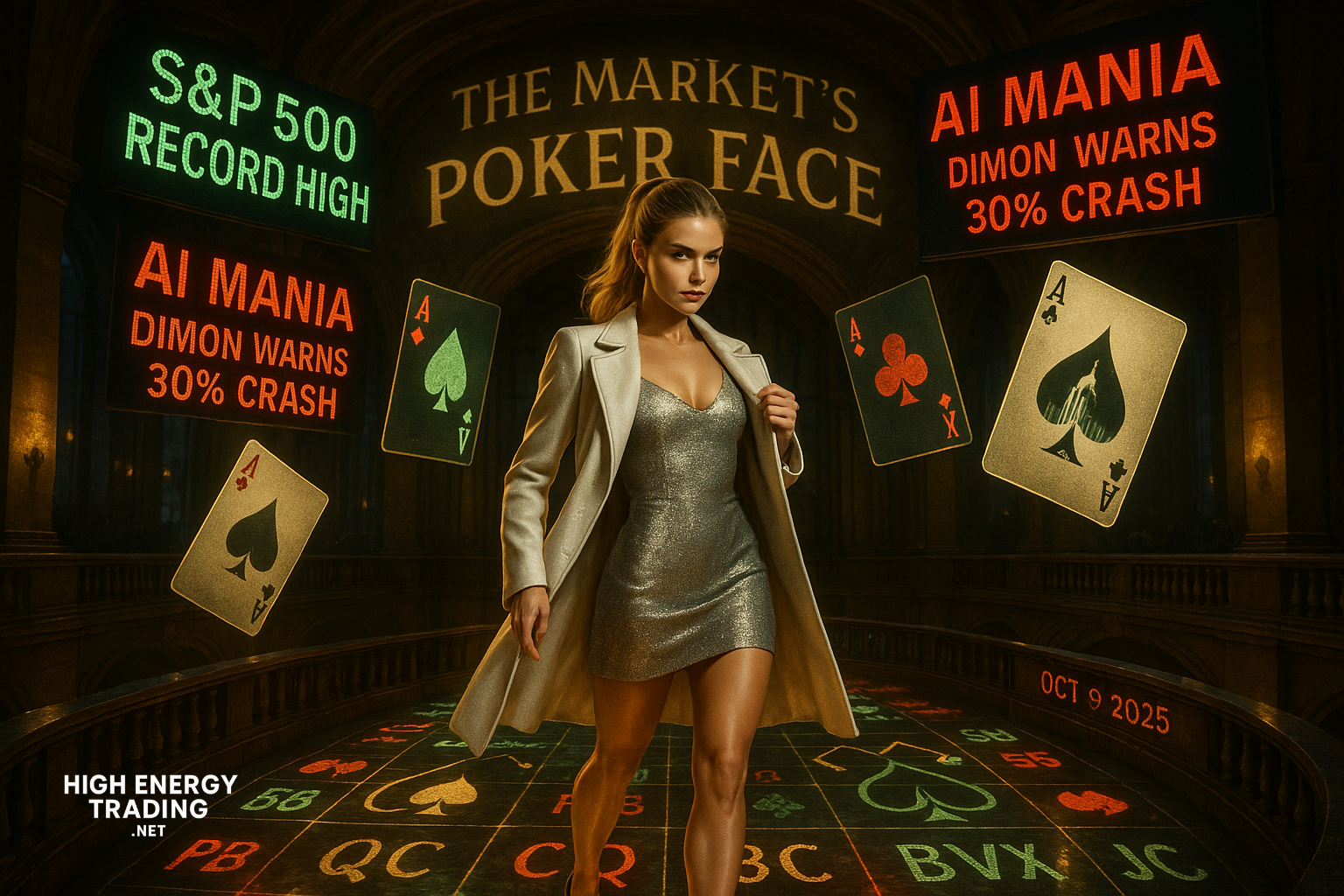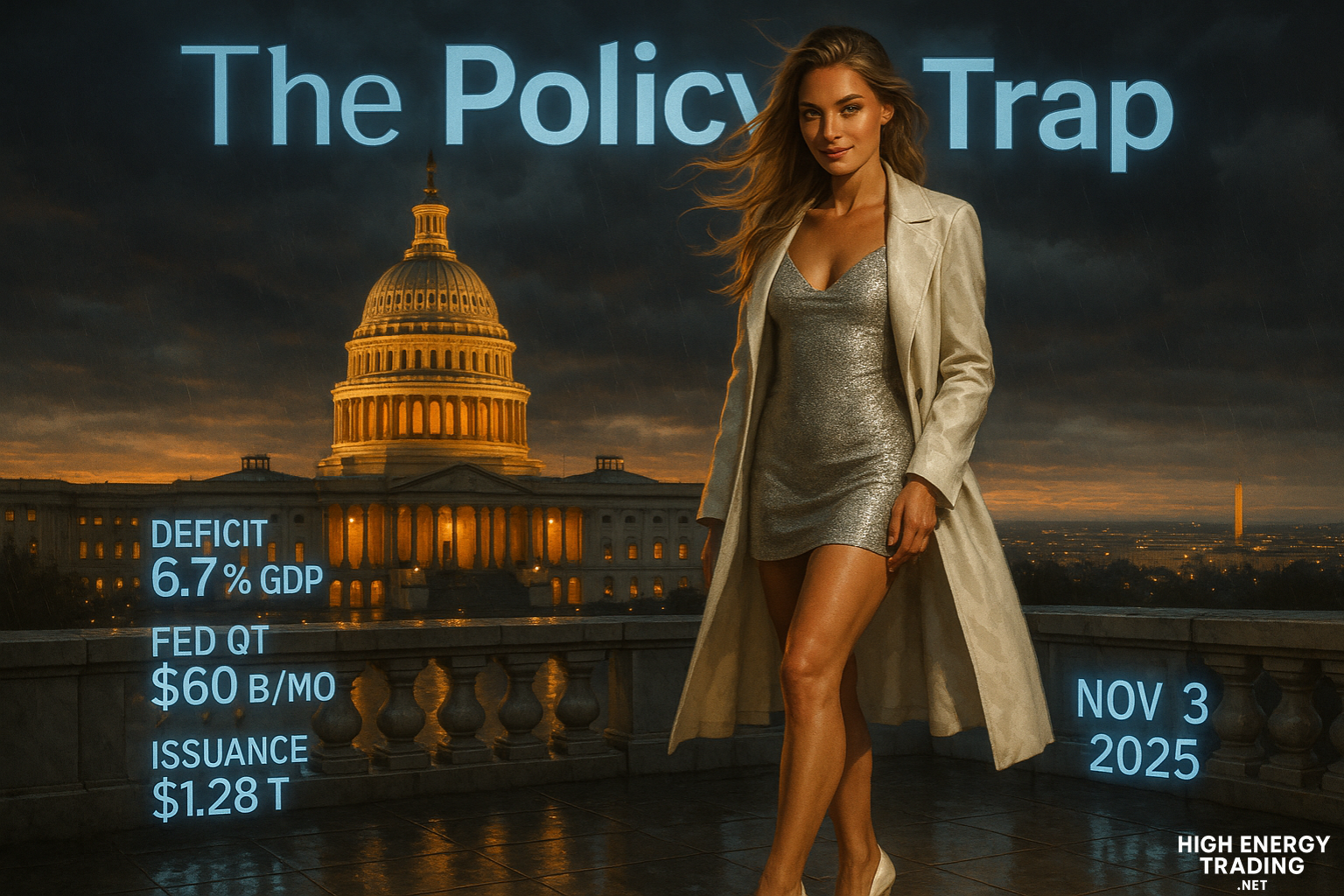The Market’s Poker Face — When Warning Signs Become Invisible
Wall Street is flashing all the right colors — surging indices, steady flows, resilient earnings. Yet behind the veneer, something feels off. When leadership figures openly warn of collapse, complacency becomes its own lever.¹
Dimon’s warning isn’t noise
Jamie Dimon, CEO of JPMorgan, recently said the odds of a U.S. stock market crash are significantly higher than what most investors assume. He sees a 30 percent chance of a sharp correction over the next six to 24 months.² Wall Street rarely talks in those odds unless it’s positioning for turbulence. The very existence of that warning suggests the downside is not fully priced.
Complacency thrives in darkness
Many market participants believe a soft landing is still possible. Central banks hint at rate cuts, inflation indicators moderate, and macro data isn’t yet flashing red. That confidence is dangerous — history shows corrections rarely begin when conditions are dire. They start when stress subtly builds under the surface.
Liquidity is still abundant. Credit markets remain cooperative. High yield spreads haven’t blown out. But the absence of stress is not the same as structural health. The next shock may not come from macro or policy narratives. It might be something underappreciated — governance vacuums, technical dislocations, Dark Pool cascades, or sudden regulatory shifts.
AI is crowding out caution
The AI mania is squeezing out the average investor’s ability to think laterally. Billions are pouring into compute, models, chips, infrastructure. But momentum doesn’t last forever. When the capital tide recedes, weak hands get flushed out first. Venture capital, growth funds, thematic ETFs — they all become easy outs.
The real signal won’t come from revenue growth. It will come from margin erosion, rising unit costs, model failures, and regulatory backlashes. And in that moment, the market will race to remove faith, not price it more precisely.
Watch these cracks widen first
Flow bifurcation: Watch how passive vs active funds behave. If active managers start underperforming relative to indexed allocations, it may hint at dislocation.
Volatility term structure: If the VIX curve steepens or inverts, it’s not just fear. It’s structural hedging resettling.
Sector leadership reversal: When tech gives up dominance to cyclicals or defensives, that’s not rotation. It’s capitulation.
Cross-structural breakdown: When correlations between equities, rates, credit, commodities, and FX start decoupling violently, regime risk is already here.
If this ends in a crash, it will not be because someone miscalculated inflation or GDP. It will be because markets lost belief — in narratives, in structure, in the story itself.
And right now, that belief is fragile.




